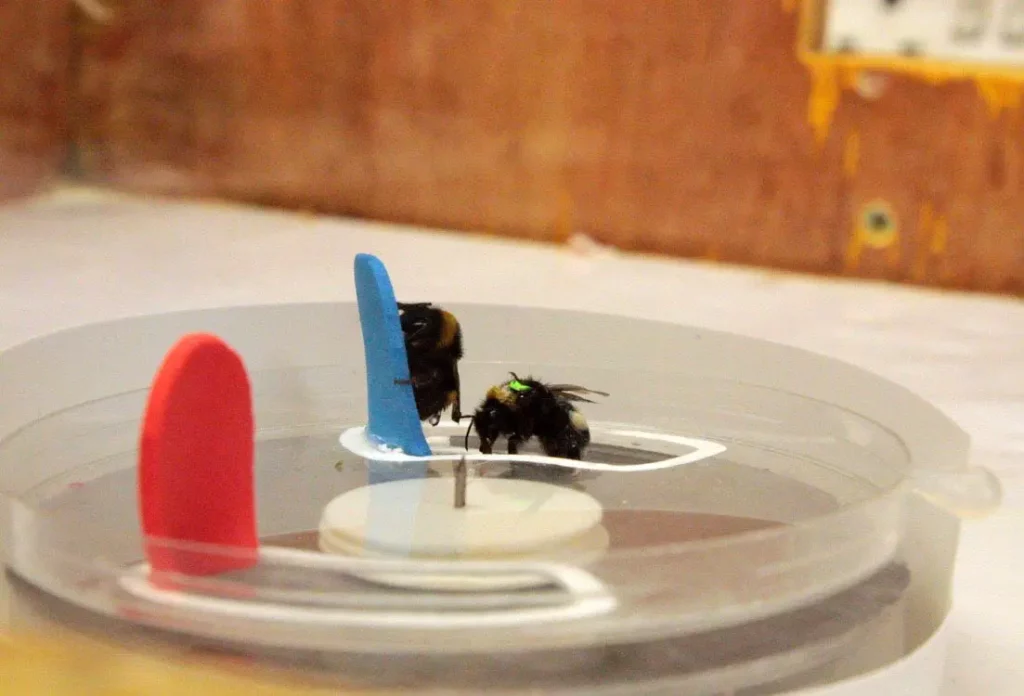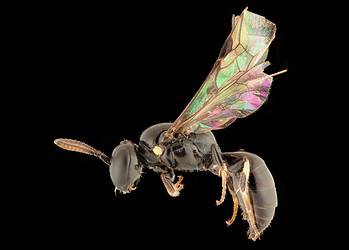Not only can these small insects learn how to solve puzzles from one another, but they can also learn from one another. This suggests that some invertebrates have the capacity to form what we humans call “culture” — passing down behaviors from one generation to the next, the researchers said.

Bumblebees are usually classified into two genera: Bombus, the nest-building bumblebees, and Psithyrus, the parasitic bumblebees. They can be found all over the world but are more common in temperate climates. Many studies have recently warned about their populations being at risk from the extensive use of pesticides in agriculture. Perhaps we should be even more concerned for them given their remarkable cognitive abilities.
Researchers from Queen Mary University in London trained a group of bumblebees to open a puzzle box containing a sugar reward. These bees then passed on the acquired knowledge to others in their colonies. This suggests that social learning has a much greater influence on the behavior of bumblebees than previously imagined, the researchers said.
“Bumblebees – and, indeed, invertebrates in general – aren’t known to show culture-like phenomena in the wild. However, in our experiments, we saw the spread and maintenance of a behavioral “trend” in groups of bumblebees – similar to what has been seen in primates and birds,” Alice Bridges, the study lead author, said in a statement.
Puzzles and bumblebees
For their study, the researchers designed a two-option puzzle box that would be opened by pushing a red tab clockwise or a blue tab counter-clockwise – revealing a 50% sucrose solution reward. They trained “demonstrator” bees to use either the red or the blue tabs while letting “observer” bees watch the whole thing and then act.
When it was their turn to tackle the puzzle, the observer bees overwhelmingly and repeatedly chose to use the same method that they had seen, even after discovering the alternative option. The preference for the taught option was sustained by whole colonies of bees, the study showed, with an average of 98.6% of puzzles done with the taught method.
The researchers also tested how observer bees would perform without a demonstrator. While some bees were able to open puzzle boxes, they did fewer times than those who benefited from seeing another bee do it first. Observer bees with a demonstrator could open 28 puzzle boxes a day, while those without one could only open one a day.
As seen with bees, a growing number of studies in recent decades have shown that animals like chimps and birds show evidence of culture, meaning they can learn from each other. This can range from using a tool to access food to navigating a migratory route. Behaviors are passed down from generation to generation, just like we do as humans.
“We tend to overlook the ‘alien civilizations’ formed by bees because they are small-bodied and their societies and architectural constructions seem governed by instinct,” Lars Chittka, a study co-author, said in a media statement. “Our research shows, however, that new innovations can spread like social media memes through insect colonies.”
This isn’t the first study to cast the intelligence of invertebrates in a new light. Several previous studies (some of them also by Chittka) found that bees have a remarkably rich intelligence and exhibit strikingly social behaviors — all the more reason to ensure they have the protection they need.
The study was published in the journal PLOS Biology.






